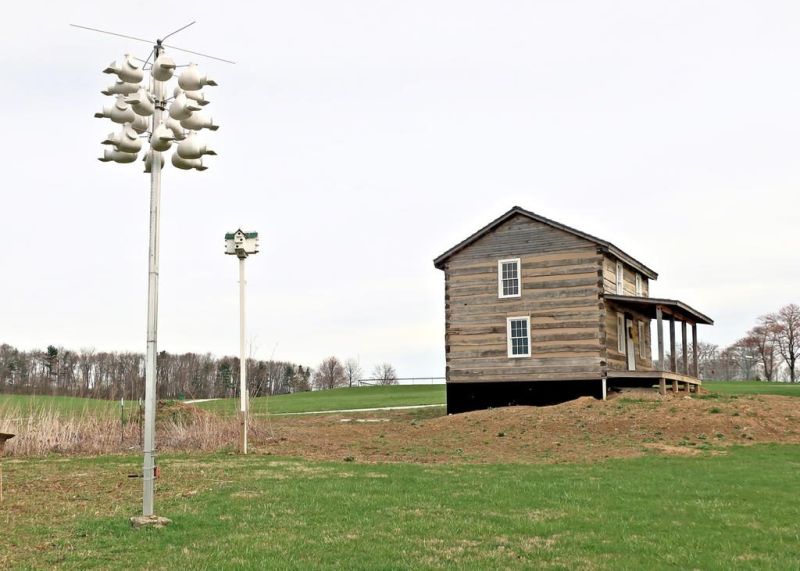Purple martin presentation at ACHS
Driving the country roads in and around Wayne and Holmes counties, it is a common sight to see groups of white bird houses high atop poles, often in groups of two or more poles. Sometimes these groups will be accompanied with gourd bird houses, also painted white. Frequently these clusters of bird houses are located on Amish farms. They are there to attract a single type of bird — purple martins.
A free presentation will be made at Apple Creek Historical Society, located on Church Street in Apple Creek, on Wednesday, April 26 at 7 p.m. The guest speaker will be local purple martin expert Don Plant, who will discuss various topics concerning support and maintenance of purple martin colonies. Plant has been involved with birds and birding most of his life and has a special passion for purple martins. He has been involved with the purple martin and bluebird programs at Malabar Farm.
Purple martins are a type of swallow. They are one of the largest swallows in the continental United States. They are cavity nesting birds and once used woodpecker holes all over the United States to nest in. Long before Europeans arrived, Native Americans would encourage purple martins to nest near their settlements by placing hollowed-out gourds for them to nest in. This practice has continued into modern times, resulting in the colonies seen on farms today. In the Eastern United States, purple martins nest almost exclusively in man-made accommodations.
Mankind has encouraged this relationship because purple martins are insectivores. They specialize in catching flying insects, some of which are detrimental to gardens, and may even reduce the number of mosquitoes around properties, making outdoor activities safer and more pleasurable.
But the dependence upon man-made shelters may be leading to dwindling populations of purple martin in the Eastern United States. It seems the number of purple martin enthusiasts is shrinking. The concern is not enough younger people are developing an interest in carrying on the tradition of supporting martins.
The presentation is open to the public. Donations for Apple Creek Historical Society will be accepted.

